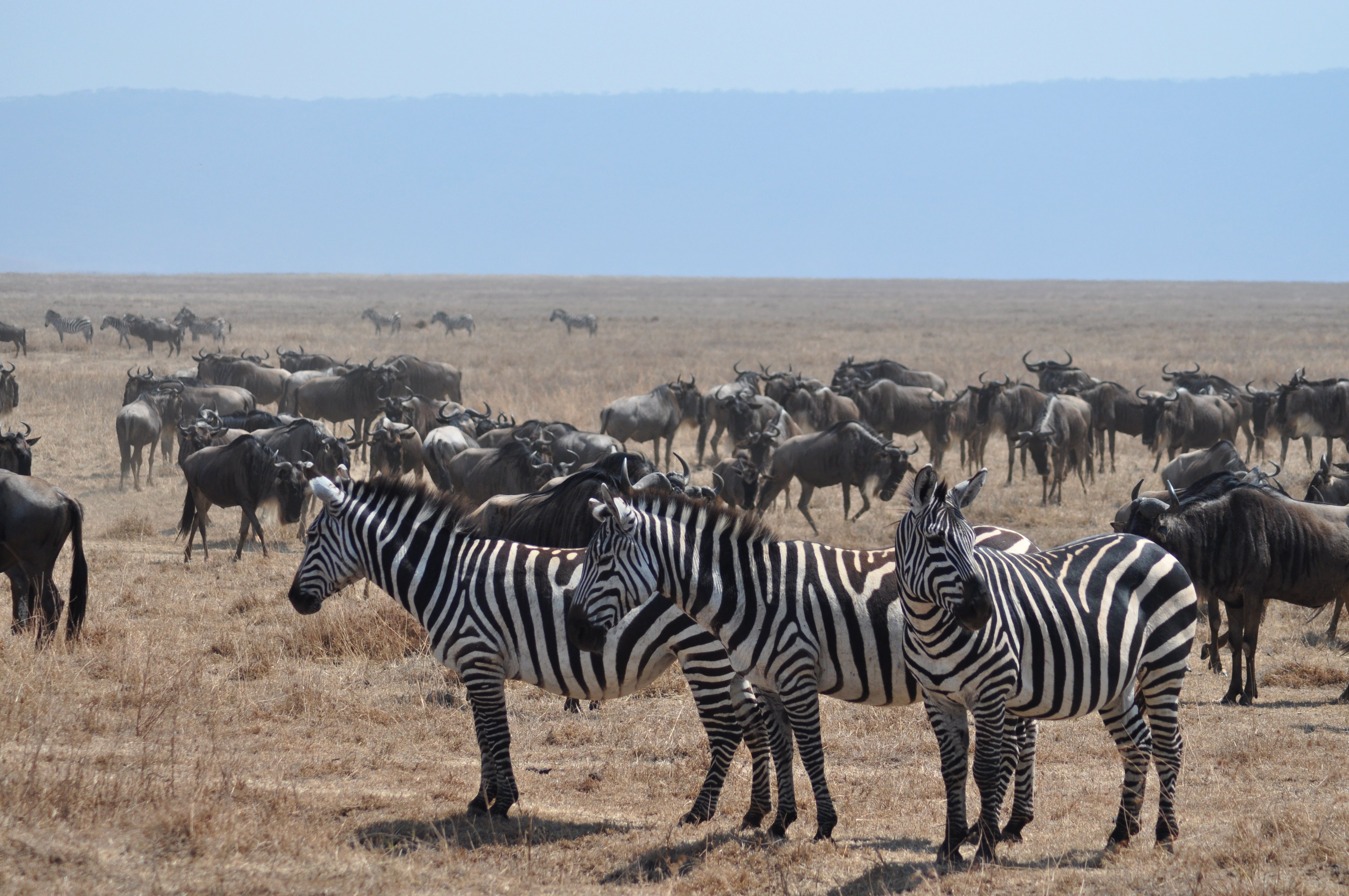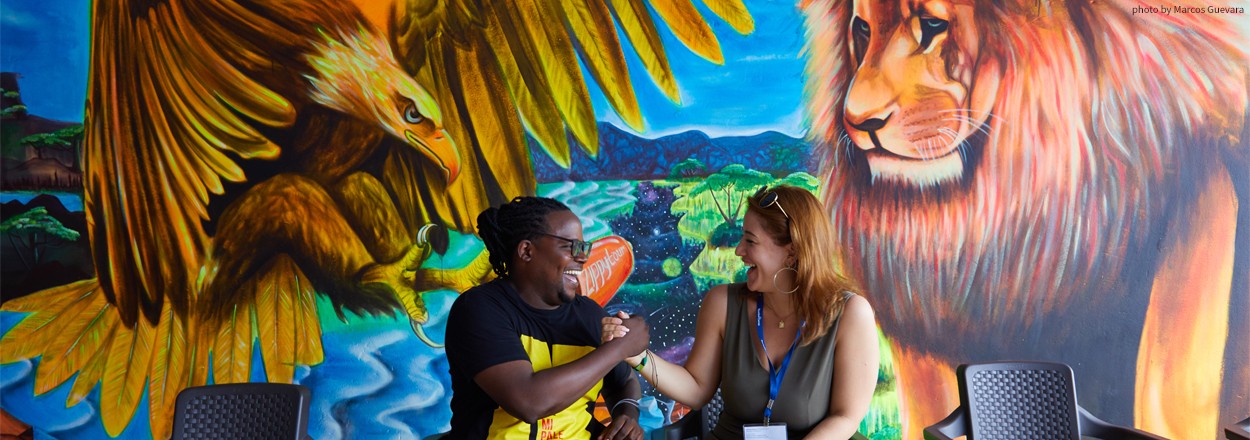Wildlife experiences are a bucket list item for many travelers — whether it’s walking with lions in South Africa, riding an elephant in Thailand or swimming with dolphins in the Bahamas. While these experiences can feel magical, they are sometimes made possible by cruel training methods, forced interactions that cause stress or lifelong confinement. Most travelers never see these realities, but they are increasingly causing concern. In fact, 79% of Americans say that tour operators should not sell experiences that cause wild animals to suffer, according to World Animal Protection.
Travelers want wildlife experiences that leave them with special memories, not ones they’ll regret the moment they learn what really went on behind the scenes. By knowing what to look for and what to avoid, you can infuse your clients’ vacations with animal-centered activities that are responsible, respectful and unforgettable.
The Truth About Animal Encounters
On the surface, the animals involved in many tourism activities seem calm and well cared for. Guides often reassure travelers that the animals they’re seeing were either rescued or are supporting conservation efforts. But this illusion can sometimes conceal a darker reality, which includes traumatic experiences, isolation and being confined to areas that are much smaller than their natural habitat.
“They’re basically in prison,” said Meghan Verbeek, a wildlife product manager at Intrepid Travel, a responsible tourism operator that has a robust and current animal welfare policy.
Even activities that appear more hands-off can sometimes require the animals to be controlled and restrained for hours at a time. The cruelty certain animals endure would make many travelers avoid these interactions entirely if they knew the truth.
“Travelers don’t book these activities because they hate animals and want them to be in pain — it’s because they truly love them,” explained Rebecca Gade-Sawicki, travel advisor and founder of Veggies Abroad, which offers small group tours and custom trip planning focused on responsible travel. “We want to see these elusive creatures we can’t find in our own backyard and feel in awe and inspired. The challenge comes from not actually knowing what goes on behind the scenes.”

Still, wildlife experiences remain a significant part of tourism, both for travelers seeking meaningful connections with nature and for communities relying on these experiences for income. In some cases, the revenue from wildlife tourism directly funds conservation efforts and essential services that, otherwise, communities wouldn’t be able to afford, such as health clinics and schools.
“There’s an argument to be made that the only reason we still have gorillas in the wild is because of tourism and the amount of money that people who want to trek to them bring in,” Verbeek said, pointing to how gorilla trekking permits support conservation and incentivize protection in places like Rwanda.
Signs a Wildlife Experience Is (or Isn’t) Ethical
Fortunately, these experiences don’t have to come at the expense of animal welfare. With careful vetting and the right partners, travel advisors can promote wildlife encounters that treat animals with compassion and still deliver a memorable experience for travelers.
As a baseline, Gade-Sawicki and Verbeek recommended looking for animal experiences that discern between domesticated and wild animals — and make sure that the latter are given the opportunity to live life as they would in nature.
“With a wild animal interaction, if you can get a selfie with it, touch it or get close to it, that’s not going to be an ethical animal encounter,” Verbeek said. “You don't want your presence to interfere with their natural behavior or impose on their space.”
Elephant bathing, for example, sometimes forces elephants to undergo the cruel breaking process as calves by standing in pools of water for hours on end — something they’d never do in the wild — which can dry out their skin. Whale-watching excursions can also stress marine animals if many boats get too close to them. Ethical experiences prioritize animal welfare over entertainment value, allowing travelers to observe animals from a respectful distance without interfering with their natural behaviors or overcrowding them.

Another red flag? A tour operator who promises wildlife sightings.
“If they guarantee that you’re going to see a certain animal, there are ethical considerations,” Gade-Sawicki explained. “It could mean that they’re baiting the animals or that they’re actually captive.”
Don’t assume that a place labeled as a “sanctuary” is automatically ethical either. Some exist primarily to attract tourists — not provide a truly safe space for animals, as their names suggest — and may allow activities that unintentionally harm the animals. Some also participate in breeding programs that perpetuate a cycle of suffering or contribute to the illegal wildlife trade.
“True sanctuaries focus on rescue, reintroduction when possible and education,” Verbeek noted. “They should be aiming to reduce the number of animals in captivity, not increase it.”
She added that accreditation by the Global Federation of Animal Sanctuaries can be one sign that a sanctuary is following ethical practices.
Ideally, you’d have the opportunity to vet each operator you work with on the ground and see firsthand how well they treat animals. But, since that’s not always possible, start by reviewing their website and looking for signs of ethical practices:
- Do they avoid promoting hands-on experiences?
- Do they clearly state their animal welfare policies?
- Do they acknowledge that animal sightings aren’t guaranteed?
Gade-Sawicki and Verbeek also recommended that travel advisors check out travelers’ recent reviews and photos. They might mention things like dirty cages, guides driving too fast through natural habitats or other red flags that a particular operation should be avoided.
It can also be helpful to connect with the destination management companies (DMCs) of the places your clients typically want to visit for wildlife, Gade-Sawicki said.
“Having a conversation with professionals that run a DMC can help you determine whether an operator is working in the best interest of the animals,” she said.

Guiding Clients Toward Better Choices Without the Guilt Trip
Travel advisors might worry that refusing to book popular but unethical animal encounters could turn off clients. But, in practice, that hasn’t been the case for responsible tour operators like Intrepid.
“The response after we removed elephant rides from our tours was overwhelmingly positive,” Verbeek said. “If you educate people about how elephants are tortured, they no longer want to ride them, and they want to travel with people who are doing things properly.”
That education doesn’t have to be heavy-handed. Most travelers simply don’t know the full story behind these experiences, and they appreciate when their advisor helps them make more informed choices. Gade-Sawicki often reminds her clients about their pets and asks whether they’d want their dog or cat to go through the same kind of treatment. Once they understand what unethical animal tourism entails, clients are usually grateful that their advisor steered them toward something more humane.
“People typically want to do a particular activity because they like those animals,” Verbeek said. “If you give them as much information as you can about why that might not be the best idea, in a nonjudgmental, kind and empathetic way, people will pay money to observe them the right way.”
Wildlife Tours You Can Feel Good About
Looking for ethical animal encounters? Here are some vetted tours to get you started.
- Boon Lott’s Elephant Sanctuary (BLES): Located in Thailand, this award-winning sanctuary lets small groups of travelers observe rescued elephants as they relearn natural behaviors.
- Volcanoes National Park Gorilla Tracking Permit: This experience takes small groups (eight or fewer) to see mountain gorillas in their natural habitat, with permit fees directly supporting conservation efforts and local communities in Rwanda.
- Homalco Wildlife and Culture Tours: This indigenous-owned company offers the chance to see wild grizzly bears feeding on spawning salmon in British Columbia’s Great Bear Rainforest.
Originally appeared in the Fall 2025 issue of The Compass magazine







comments